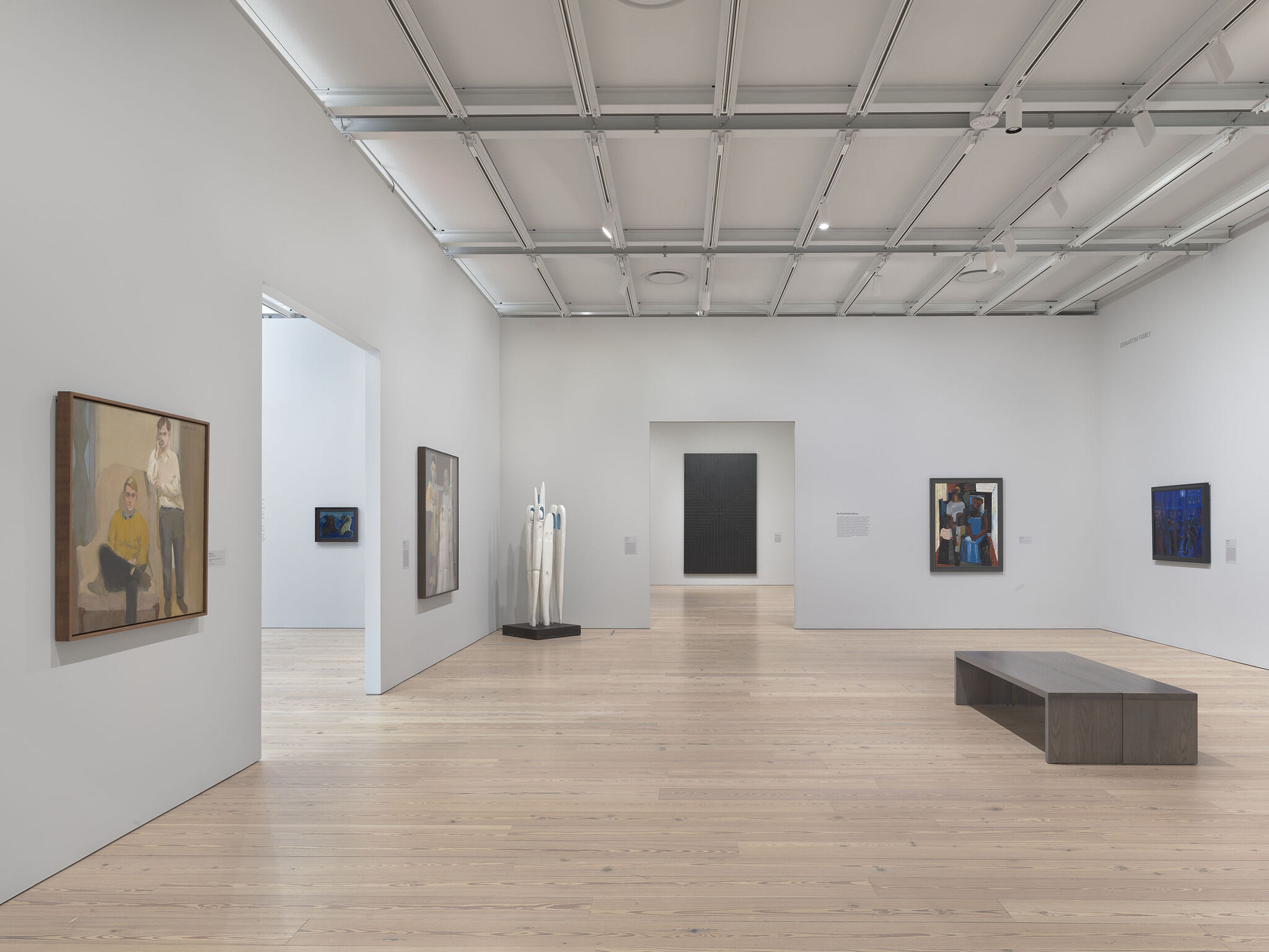Louise Bourgeois’s work frequently explores the relationship of the individual to the group and, specifically, of the child to the family. After emigrating from Paris to New York in 1938, Bourgeois soon embarked on a series of carved and painted wood sculptures, which she called “Personages,” that evoked the upright human form. The sculptures, she explained, were a way of recreating all the people she had left behind in her homeland. Quarantania, an early example from this series, consists of five elongated forms huddled on a pedestal, in a “duel,” as she put it, “between the isolated individual and the shared awareness of the group.” She alluded in part to her own childhood: the group in Quarantania not only resembles human figures, but also sewing needles or weaving shuttles, the tools of her family’s tapestry restoration trade. At the same time, the abstract character of the forms summons forth a totemic or mythic presence.
Not on view
Date
1941
Classification
Sculpture
Medium
Painted wood
Dimensions
Overall: 84 × 29 1/4 × 31 1/4 in. (213.4 × 74.3 × 79.4 cm)
Accession number
77.80
Credit line
Gift of an anonymous donor
Rights and reproductions
© The Easton Foundation / Licensed by VAGA at Artists Rights Society (ARS), NY








